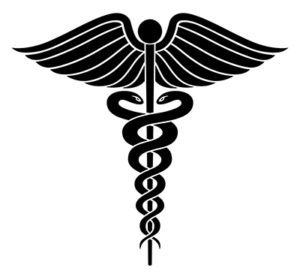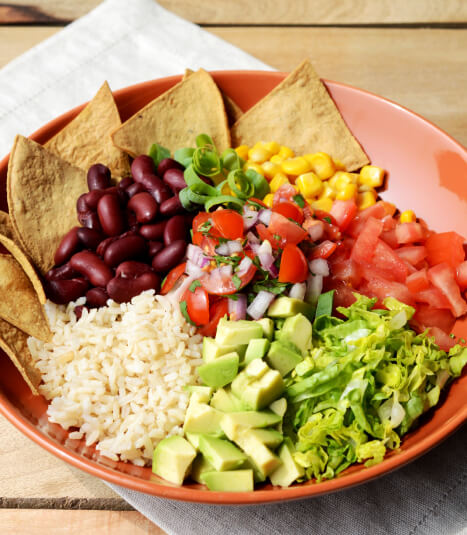Favorite 5 Articles from the May 2005 Newsletter
My Favorite 5 Articles Found in Recent Medical Journals
Dairy and Type-2 Diabetes – Wrong Conclusion
Dairy consumption and risk of type 2 diabetes mellitus in men: a prospective study by Hyon K. Choi in the May 9, 2005 issue of the Archives of Internal Medicine found dietary patterns characterized by higher dairy intake, especially low-fat dairy intake, may lower the risk of type-2 diabetes in men. They used data from The Health Professionals Follow-up Study – an ongoing longitudinal study of 51,529 male dentists, optometrists, osteopaths, pharmacists, podiatrists, and veterinarians who were 40 to 75 years of age in 1986. Those consuming the most low-fat dairy had 12% less risk of developing diabetes compared to those eating the least amount.
The proposed mechanism for less diabetes was: dairy products may have favorable effects on body weight, the major determinant of type-2 diabetes. However, there was no association with body weight and dairy consumption found in this study – in other words, those eating more dairy were the exact same weight as those eating less dairy – countering their hypothesis for why dairy causes less diabetes.
News headlines worldwide claimed ‘Milk may keep diabetes away’ and ‘Low-fat dairy prevents diabetes’ and ‘Dairy blocks diabetes.’ May 9, 2005 must have been one of the dairy industry’s happiest days. The findings, however, are irrelevant because there is no ‘cause and effect’ relationship shown between the consumption of dairy and diabetes prevention. The curious reader will discover that this study only shows that people who choose more dairy foods, and especially low fat dairy, as part of their diet have less diabetes than those who choose less dairy. This finding is easy to explain without inventing some novel preventative property of cow’s milk.
The dairy industry has traditionally targeted their messages to health conscious people who generally eat better and exercise more – because of these habits these people have less type-2 diabetes. This better lifestyle for the higher dairy group is confirmed by the observations from this study that those eating more dairy (especially low-fat dairy) also ate more fruits and vegetables, ate more carbohydrates, were more physically active, drank less alcohol, and were less likely to have high blood pressure and high cholesterol. So, what is so hard to figure out here and why did the news media miss the obvious?
Type-2 diabetes is a disease of overnutrition (see my February 2004 newsletter). The body responds to excess body fat accumulation by becoming insulin resistant and later stages of this resistance are characterized by changes, such as elevated blood sugar (people develop type-2 diabetes).
The authors of this study should be ashamed of themselves for suggesting dairy products cause weight loss (they didn’t in their study). Even the employees of the dairy industry know better – although their ads don’t share this truth with the public. Cow’s milk is intended to grow a calf from 60 pounds to 600 pounds. The same researchers who did this study (from the Harvard School of Public Health) have in the recent past linked a diet high in red meat, processed meat, high-fat dairy products, and refined grains, combined with obesity and inactivity, with a high risk for type 2 diabetes in men. Other studies have also made the link between type-2 diabetes and more dairy food consumption.
One of my greatest concerns for this misinformation is that it will be interpreted to mean that dairy foods are good for diabetics. These metabolically compromised people are at very high risk of cancer, heart disease, osteoporosis, kidney failure, and blindness – problems aggravated by all the animal protein and saturated fat in dairy products. Diabetics also have serious bowel dysfunction which dairy is notorious for causing.
1) Choi HK, Willett WC, Stampfer MJ, Rimm E, Hu FB. Dairy consumption and risk of type 2 diabetes mellitus in men: a prospective study. Arch Intern Med. 2005 May 9;165(9):997-1003.
2) Fung TT, Schulze M, Manson JE, Willett WC, Hu FB. Dietary patterns, meat intake, and the risk of type 2 diabetes in women. Arch Intern Med. 2004 Nov 8;164(20):2235-40.
3) Montonen J, Knekt P, Harkanen T, Jarvinen R, Heliovaara M, Aromaa A, Reunanen A. Dietary patterns and the incidence of type 2 diabetes. Am J Epidemiol. 2005 Feb 1;161(3):219-27.
4) Archer SL, Greenlund KJ, Valdez R, Casper ML, Rith-Najarian S, Croft JB. Differences in food habits and cardiovascular disease risk factors among Native Americans with and without diabetes: the Inter-Tribal Heart Project. Public Health Nutr. 2004 Dec;7(8):1025-32.
5) Parillo M, Riccardi G. Diet composition and the risk of type 2 diabetes: epidemiological and clinical evidence. Br J Nutr. 2004 Jul;92(1):7-19.
The Best Breast Cancer Treatment: Diet and Exercise
Physical activity and survival after breast cancer diagnosis by Michelle Holmes published in the May 25, 2005 issue of the Journal of the American Medical Association found physical activity, like walking 3 to 5 hours a week at an average pace, reduced the absolute risk of death for women with breast cancer by 6% over 10 years.
On May 16, 2005 Rowan Chlebowski, MD, of Harbor-UCLA Medical Center Los Angeles presented the first results from the Women’s Intervention Nutrition Study of 975 middle-aged women with breast cancer assigned to a low-fat diet. Over 5 years of study these women were found to have fewer recurrences than those who remained on the high-fat American diet. In the diet intervention group, women lowered their fat intake from 29% to 20% of calories. Unfortunately, meat, dairy, poultry, butter and other sources of animal fat were not eliminated on this ‘low-fat diet’ – nor was there any evidence that these women cut their calorie intake or ate more fruits and vegetables.
On average, 9.8% of women on the ‘low-fat diet’ had a recurrence at 5 years and those on the standard American diet had a 12.4% rate of recurrence. The absolute risk reduction was 2.6%. On the low fat diet, women lost 4 pounds. For women with tumors that were relatively insensitive to estrogen (estrogen negative, usually premenopausal women), the risk of recurrence was reduced even more – about twice as much.
In both studies the researchers suggested that the interventions (exercise and diet) worked by causing weight loss and by lowering cancer-promoting hormones, like insulin and estrogen.
1) Holmes M, Chen W, Feskanich D, Kroenke C, Colditz G. Physical Activity and Survival After Breast Cancer Diagnosis. JAMA. 2005;293:2479-2486.
2) Bill-Axelson A, Holmberg L, Ruutu M, Haggman M, Andersson SO, Bratell S, Spangberg A, Busch C, Nordling S, Garmo H, Palmgren J, Adami HO, Norlen BJ, Johansson JE; Scandinavian Prostate Cancer Group Study No. 4. Radical prostatectomy versus watchful waiting in early prostate cancer. N Engl J Med. 2005 May 12;352(19):1977-84.
3) Baxter NN, Tepper JE, Durham SB, Rothenberger DA, Virnig BA. Increased risk of rectal cancer after prostate radiation: a population-based study. Gastroenterology. 2005 Apr;128(4):819-24.
4) Johansson JE, Andren O, Andersson SO, Dickman PW, Holmberg L, Magnuson A, Adami HO. Natural history of early, localized prostate cancer. JAMA. 2004 Jun 9;291(22):2713-9.
What’s New in Prostate Cancer Treatment?
Three studies published over the past month may influence the way a patient with prostate cancer is treated, but will the changes be in the patient’s best interest?
First Study: 20-year outcomes following conservative management of clinically localized prostate cancer by Peter Albertsen in the May 4, 2005 issue of the Journal of the American Medical Association found, ‘The annual mortality rate from prostate cancer appears to remain stable after 15 years from diagnosis, which does not support aggressive treatment for localized low-grade prostate cancer.’ A study with similar findings was published in 2004 in this same journal.
Second Study: Radical prostatectomy versus watchful waiting in early prostate cancer by Anna Bill-Axelson in the May 12, 2005 issue of the New England Journal of Medicine found ‘Radical prostatectomy reduces disease-specific mortality, overall mortality, and the risks of metastasis and local progression. The absolute reduction in the risk of death after 10 years is small, but the reductions in the risks of metastasis and local tumor progression are substantial.’
Third Study: Increased risk of rectal cancer after prostate radiation: a population-based study by Nancy Baxter in the April 2005 issue of Gastroenterology found, ‘a significant increase in development of rectal cancer after radiation for prostate cancer. Radiation had no effect on development of cancer in the remainder of the colon, indicating that the effect is specific to directly irradiated tissue. Rectal cancer was 70% higher in areas exposed to radiation.
Comments: Doctors want to help their patients and it is very difficult to tell someone that the treatments available are of little value. Therefore, the first study (cited above) will be easily forgotten, and the second study with more optimistic findings will become a big part of the standard sales pitch for prostate surgeons. The truth is we do not know if there is any benefit from radical surgical treatment of prostate cancer. My understanding of this disease leads me to believe that ultimately research will show that surgery and radiation translate into no survival benefits.
1) Albertsen PC, Hanley JA, Fine J. 20-year outcomes following conservative management of clinically localized prostate cancer. JAMA. 2005 May 4;293(17):2095-101.
2) Bill-Axelson A, Holmberg L, Ruutu M, Haggman M, Andersson SO, Bratell S, Spangberg A, Busch C, Nordling S, Garmo H, Palmgren J, Adami HO, Norlen BJ, Johansson JE; Scandinavian Prostate Cancer Group Study No. 4. Radical prostatectomy versus watchful waiting in early prostate cancer. N Engl J Med. 2005 May 12;352(19):1977-84.
3) Baxter NN, Tepper JE, Durham SB, Rothenberger DA, Virnig BA. Increased risk of rectal cancer after prostate radiation: a population-based study. Gastroenterology. 2005 Apr;128(4):819-24.
4) Johansson JE, Andren O, Andersson SO, Dickman PW, Holmberg L, Magnuson A, Adami HO. Natural history of early, localized prostate cancer. JAMA. 2004 Jun 9;291(22):2713-9.
Calcium and ‘Vitamin D’ Do Not Prevent Fractures
Randomised controlled trial of calcium and supplementation with cholecalciferol (vitamin D3) for prevention of fractures in primary care by Jill Porthouse in the April 30, 2005 issue of the British Medical Journal found, ‘no evidence that calcium and vitamin D supplementation reduces the risk of clinical fractures in women with one or more risk factors for hip fracture.’ This study observed 3314 women, 70 years and older, over a period of 25 months. Half of the women were given 1000 mg of calcium and 800 IU of vitamin D daily. The other half received no supplements. Fracture rates did not differ between those who took the supplements and those who did not.
Comment: Fractures are the result of poor bone tissue, not calcium gain or loss. The intestine absorbs the amount of calcium needed to mineralize the bone. Generally, if the bone tissues are healthy they will hold more calcium and appear denser on testing. The dietary requirement for calcium is very small and there is always sufficient calcium in the diet to meet the body’s needs. Because there was no deficiency in the first place, adding more as a pill cannot possibly be of benefit. Likewise, adding vitamin D pills is not a remedy unless the patient suffers from vitamin D deficiency.
1) Porthouse J, Cockayne S, King C, Saxon L, Steele E, Aspray T, Baverstock M, Birks Y, Dumville J, Francis R, Iglesias C, Puffer S, Sutcliffe A, Watt I, Torgerson DJ. Randomised controlled trial of calcium and supplementation with cholecalciferol (vitamin D3) for prevention of fractures in primary care BMJ. 2005 Apr 30;330(7498):1003.
‘Liver Cleansing’ with Olive Oil and Lemon Juice – Myth
Could these be gallstones? Asked Christian Sies in the April 16, 2005 issue of the Lancet. A 40-year-old patient with many 1 to 2 mm gallstones underwent a ‘liver cleansing’ with apple and vegetable juice, followed by 600 ml (20 ounces) of olive oil and 300 ml (10 ounces) of lemon juice, taken over several hours. She painlessly passed semi-solid green ‘stones’ with her stool. She brought them to her doctor, who examined them under a microscope and found no crystalline structures (as would be seen in an actual gallstone). Heating to 40 degree C for 10 minutes caused the ‘stones’ to melt. Analysis showed they contained no cholesterol, bilirubin, or calcium (like a real stone might have). Chemical analysis found the ‘stones’ were fat globules mostly from the olive oil. The investigators next made similar balls that looked like stones in their lab by mixing olive oil and lemon juice and then drying the mixture.
Comments: Many people believe this alternative therapy really works, but the ‘gallbladder flush’ is a myth. Gallstones are a result of supersaturation of the bile with cholesterol from the Western diet and they become stubbornly packed in the gallbladder. About 15% of people in Western societies have gallstones – eventually they become so common in middle-aged women that as many as half of them carry around stones – and most don’t know it. Gallstones that cause no pain or other symptoms should be left alone, rather than removed.
1) Sies CW, Brooker J. Could these be gallstones? Lancet. 2005 Apr;365(9468):1388.
Recommended Articles

Giving Thanks

Working with MDs







